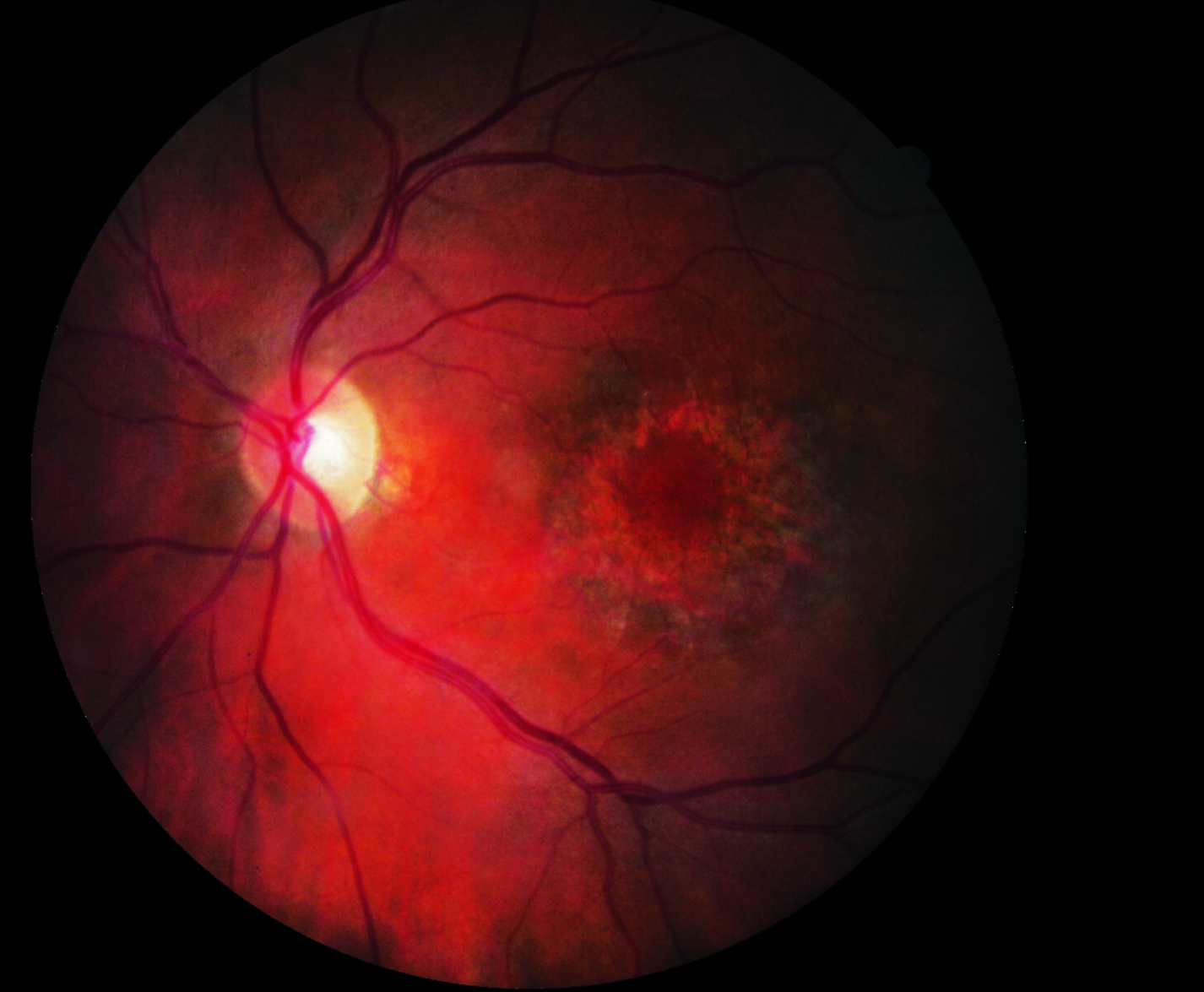 |
| Choroidal volume, vascularity index and luminal volume were significantly lower in patients on hydroxychloroquine, which could be an early indicator of choroidal toxicity. Photo: Marlon Demeritt, OD. Click image to enlarge. |
The ocular toxicity risks in patients taking hydroxychloroquine are familiar to all optometrists and ophthalmologists, but the exact effect of hydroxychloroquine on choroidal vasculature is unclear. In a new study, researchers sought to determine changes in choroidal volume (CV) and choroidal vascularity index (CVI) in such patients. They found that CV and CVI are significantly reduced in patients on hydroxychloroquine, especially at higher cumulative doses.
A total of 137 adult patients (23 male, 114 female) were included, with a mean age of 45.6, and most identified as Caucasian (79%). Total duration of treatment ranged from three months to 20 years and daily intake varied from 150mg to 600mg, while cumulative doses ranged from 18g to 2,800g.
CV and CVI were assessed below the central foveal region on spectral-domain OCTn and were compared with age-matched controls. Regression analyses were performed to generate associations between CV and CVI with demographics and hydroxychloroquine treatment parameters.
Both choroidal measures were significantly reduced in patients on hydroxychloroquine, especially at higher cumulative doses. These findings suggest new tools to guide medical decision-making for patients receiving HCQ therapy for rheumatologic diseases.
Several studies have investigated choroidal thickness in hydroxychloroquine and established hydroxychloroquine retinopathy, but none have conclusively determined the effects of the treatment on choroidal thickness. One compared changes in choroidal and retinal thickness between patients with hydroxychloroquine retinopathy and unaffected patients on long-term HCQ therapy and didn’t find a significant difference in choroidal thickness between groups; however, the retinal thickness was significantly decreased in those with hydroxychloroquine retinopathy. Another study showed significant choroidal thinning in patients with hydroxychloroquine retinopathy compared to those without the treatment but on long-term of hydroxychloroquine, and a third study showed increased choroidal thickness in patients on long-term hydroxychloroquine.
“In light of these contrasting results, CVI has been proposed as a better parameter than choroidal thickness for study,” the authors explained in their paper for the journal Eye. “Incomplete characterization of hydroxychloroquine’s effect on choroidal vascularity was a major impetus for our study.”
The authors also note that choroidal thickness cannot be fully attributed to hydroxychloroquine toxicity of the choroid and could be related to the disease itself, but further research is necessary.
“These findings may be an early indicator of hydroxychloroquine therapy and suggest new tools to guide medical decision-making for patients receiving hydroxychloroquine therapy,” the authors concluded.
Hasan N, Driban M, Mohammed AR, et al. Effects of hydroxychloroquine therapy on choroidal volume and choroidal vascularity index. Eye. September 28, 2023. [Epub ahead of print.] |

